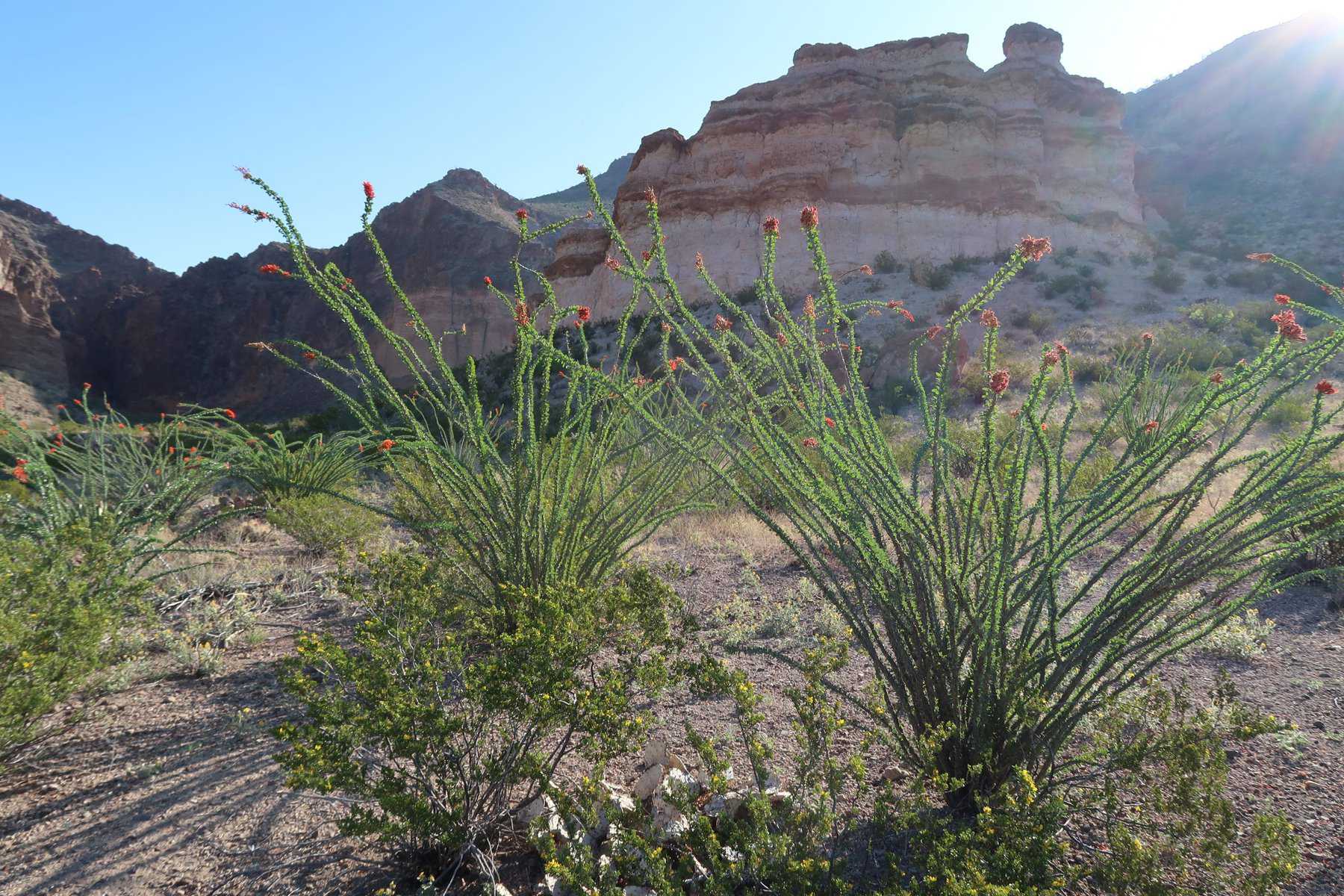According to many statistics, safety in Big Bend National Park is one of its greatest challenges. In fact, evidence suggests that the per-visitor death rate at Big Bend is the highest of any national park in the lower 48 states.
But we sure do love this park, and we want to share with you all of the precautions you need to take to have a safe and memorable family trip to our Big Bend!
Our top tips for safety in Big Bend include…
- Proper vehicle preparation including safe tires, full gas tanks, and reliable engines.
- Attention to medical needs such as first aid kits, extra prescription medication, and no imminent health concerns.
- Concientious international travel practices including passport security, language assistance, and border-are awareness.
- Weather awareness and safety practices for temperature highs and lows.
- Climate awareness including best safety practices for extreme desert heat and best hydration practices.
- Understanding of the dangers imposed by some desert plants including numerous varieties of cacti.
- Understand of the dangers imposed by some native wildlife species such as bears, mountain lions, javalina, coyotes, snakes, and other fun-from-a-distance critters.
- Know the dangers of recreational activities such as off-roading, river adventures, and hiking, especially around mining sites.
As soon as you learn your Big Bend safety skills you can ride this park like a rodeo cowboy! Yee-Haw!
How does location affect safety in Big Bend National Park?
Big Bend National Park is located in a remote region of southwest Texas. It is so remote that El Paso International Airport, your closest major option, is a long, five hour drive from the park.
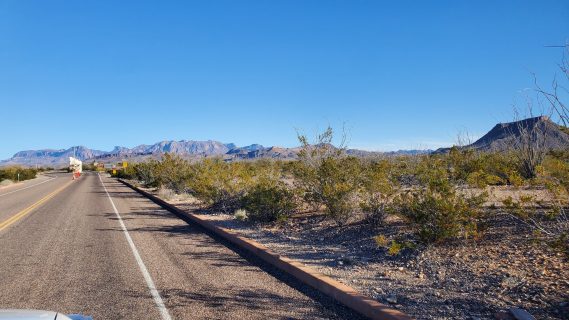
Once you arrive in this desert oasis, you find that Big Bend’s southern border is the Rio Grande River. Kids and adults alike enjoy the opportunity to peer over the river into our neighboring country of Mexico!
Due to its geography, there are several safety considerations that families visiting Big Bend should follow:
- Vehicle Safety – Ensure that you maintain at least half a tank of gas at all times. Note that if you are driving to Big Bend from the east, there is a 100ish mile stretch ending with Fort Stockton where you will not find gas. Additionally, some of the park roads are rough, and the pavement is hot. Ensure that your tires have plenty of tread and are in good condition.
- Medical Needs – There is no pharmacy in or near Big Bend National Park. Alpine and Fort Stockton will be your best bets for fulfilling any necessary medications. Ensure you have what you need with you at all times.
- International Travel – If you choose to go through the United States / Mexico border crossing at Boquillas Canyon, please ensure that you have your passports and other safety gear necessary for international travel.
As long as you are attentive to these basic precautions, the remote location of Big Bend National Park will bring you peace, not risk.
Crime statistics in Big Bend National Park
A search of National Park’s Investigative Services Branch records turns up no violent criminal activity of note at Big Bend National Park within the last five years.
However, in a 2008 brief on drug trafficking, the National Drug Intelligence Center reported that the terrain and thinly stretched law enforcement provide opportunities for increased criminal activity.
Big Bend National Park has a strong commitment and a stellar reputation for protecting park guests. In fact, on our recent visit, we crossed TWO border patrol locations near the park. One was prior to the eastern entrance, and one was between Terlingua and Alpine.
We also witnessed several Border Patrol officers parked at various locations within Big Bend. Their presence again reinforced to visitors that the park is committed to guest safety.
Natural Dangers in Big Bend National Park
According to the National Parks Service, the biggest threats to visitor safety in Big Bend are all natural features.
1. Climate
Big Bend National Park has a hot, dry climate with an average of 10″-20″ of precipitation per year.
Where the winters are typically mild with only occasional freezes, the summer months are brutally hot and unforgiving.
Incident reports for the park listed at NPSHistory.com show that heat related deaths are all too common in the summer. In fact, it is the summer heat that makes Big Bend National Park the most dangerous (per capita) national park in the lower 48 states!
2. Terrain
Big Bend boasts 1,252 square miles of mountains, canyons, and desert situated along 118 miles of Rio Grande River at its southern border.
Wherein the terrain makes this park full of diversity and recreational opportunities, it also makes it dangerous.
Between drowning in the river or in flash floods, slipping down a slope or off a cliff, or simply the vast dryness of the desert floor, the terrain is a challenge that does pose risks.
Ensure that you are always aware of your surroundings and prepared for the terrain you will encounter while visiting Big Bend National Park!
3. Plants
Often when we think about dangerous plants, we may think of poison ivy or stinging nettle. In Big Bend, we also have to consider over 60 species of cactus!
According to Visit Big Bend and the National Park Service, visitors to this park can find over 1,200 species of plants within its borders!
Arizona Pine, Quaking Aspen, and Douglas-Fir trees decorate the Chisos Mountains. The woodland areas of the park host Oak, Juniper, and Pinyon Pine trees. The deserts are home to Yucca and Agave trees as well as a variety of shrubs.
But those cacti are EVERYWHERE!
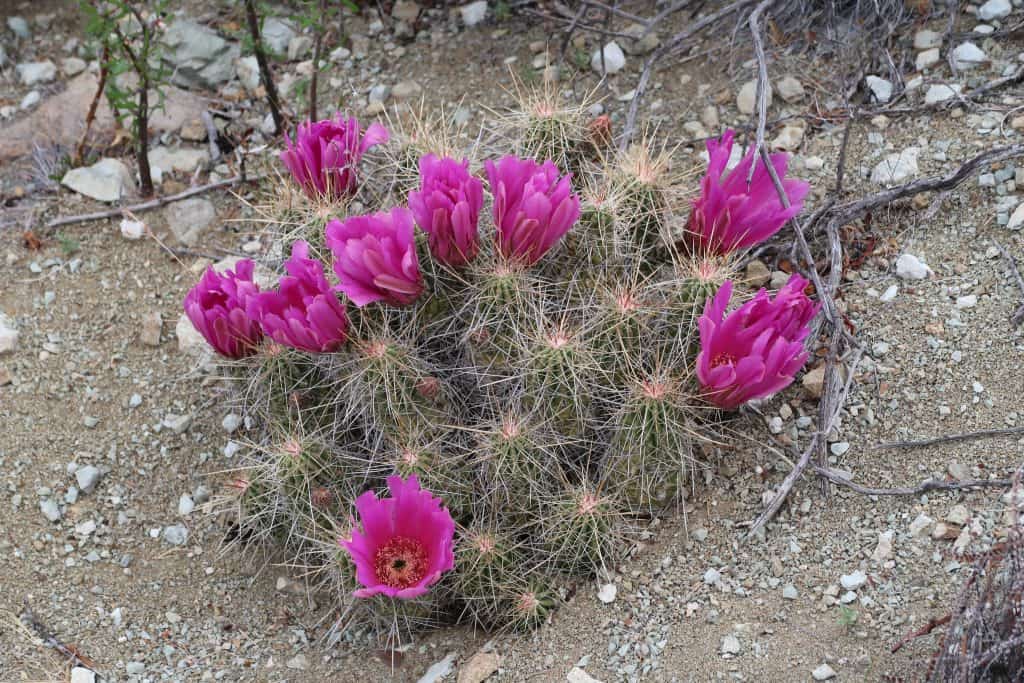
For a closer look-and-learn of the Big Bend cacti, take the short, interpretive trail around the Panther Junction Visitor Center. It’s a great way to introduce the kids to the dangers and the beauties of these species.
Just don’t touch.
And have some tweezers in case you do…
4. Animals
Animal life in Big Bend National Park is also (you guessed it), plentiful and various!
The most famous animals to consider are Mexican black bears, javelina, coyotes, and cougars.
Rangers say to slowly back away from the black bears, but make yourself large and loud if you encounter the cougars.
Venomous snakes and stinging scorpions are often around. Spiders and centipedes are other critters to beware of.
Don’t forget to look to the tree tops and skies to catch a glimpse of over 450+ species of feathered friends, but the birds are not a notable danger to visitors.
The truth is, you have to be TOUGH to make it in this remote, desert region!
Know your surroundings, and have a plan for any animal encounter you may experience. The safer you are, the more you can enjoy the mammal sighting stories that last a lifetime!
Wildlife safety in Big Bend National Park
When it comes to wildlife safety in Big Bend, the most important thing to remember is that the animals are wild and thus unpredictable, no matter how captivating they may be.
Rule number one of wildlife safety is never, ever feed a wild animal.
Stay at least 25 yards from all animals and 100 yards or more from bears. It’s also important to be well versed in bear safety before visiting the park.
Bears
Bears may visit your camp in search of a tasty treat. Campsites are equipped with bear-proof food storage lockers for visitor use. Alternatively, you may store all food, cookware, coolers, and toiletries in your vehicle.
Bears aren’t picky eaters and will also munch on trash, so make sure to use the provided bear-proof dumpsters for all garbage.
Find more bear safety tips here.
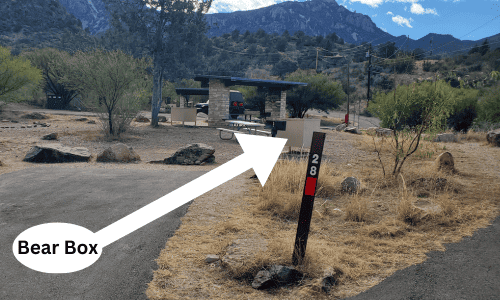
Mountain Lions
Mountain lions (also known as cougars) are the other large predator at Big Bend. If you encounter one, stand your ground, wave your arms up high to look larger, and make as much noise as possible. Click here for more information and safety tips on cougars at Big Bend.
Groups should stick together and keep children close. If you encounter one of these animals, NEVER try to run away.
There is safety in numbers when it comes to coexisting with bears and cougars.
Snakes, Scorpions, and Cintipedes, OH MY!
When it comes time to camp be sure to check all shoes, tents, bedding, snd sleeping bags for venomous snakes, spiders, scorpions, and centipedes before using these items.
Don’t forget to watch your footing along the hiking trails, especially in the lower desert areas. Read our post on Big Bend snake safety before you go!
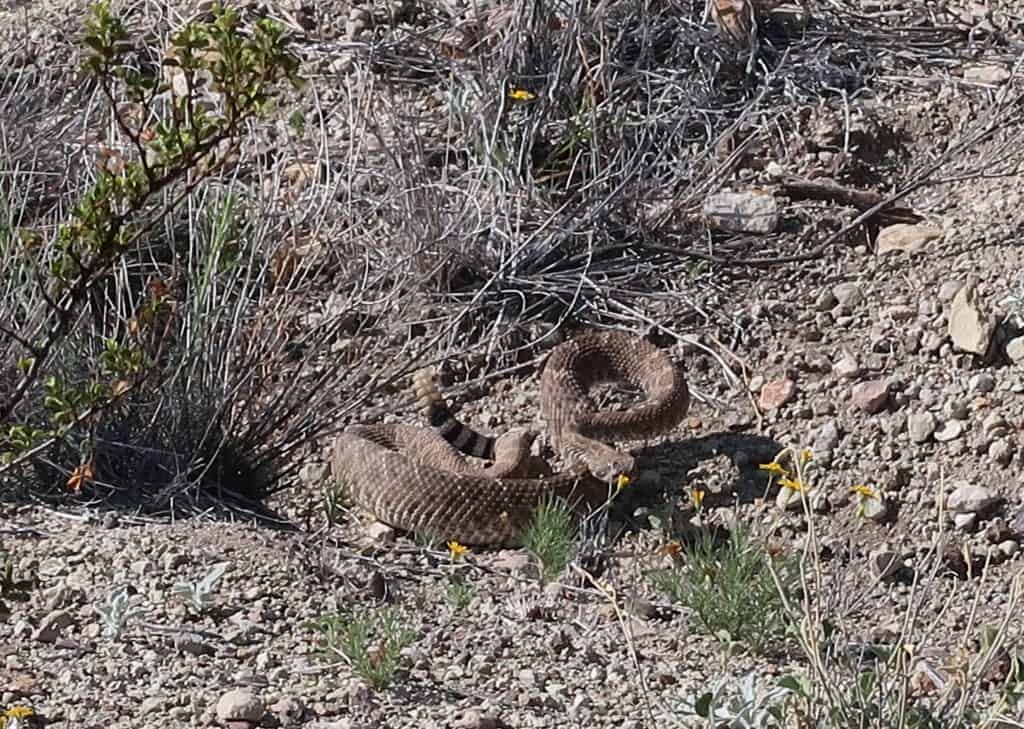
Carry a flashlight if you need to leave your tent at night and don’t allow children to wander.
Recreational Safety in Big Bend National Park
There are many different recreational activities at Big Bend and each of them require participants to take safety precautions. Have fun, but do so safely.
When hiking, wear high boots, thick socks, and long pants to protect from snake, spider, and scorpion bites. Additionally, watch where you are walking and where you place your hands.
Wear sunglasses, sunscreen, hats, and long sleeves to protect your eyes and skin from sun overexposure.
Bring plenty of water. One gallon per person per day is the minimum requirement, but even more is needed in the heat of the summer months.
Avoid hiking during the hottest part of the day.
Pack plenty of food, but consider foods with low odor to avoid attracting bears. Salty snacks and electrolyte supplements help stave off dehydration and muscle cramps.
Plan your route ahead of time. Stick to designated trails, and carrying a map or non-cellular GPS device to help you find your way.
Pay attention to all park signs and obey them. Travel and explore in groups of two or more, and consider carrying emergency radios and flares in case you need to flag down help.
When it comes to water activities, it’s important to know the dangers associated with the Rio Grande River. Even when it appears calm, currents beneath the surface of the Rio Grande can be deadly.
Rapid tides can quickly carry people and items downriver. Swimming is highly discouraged. Boats or rafts with oars can help you more safely navigate around hazards in the water.
Coast Guard approved life vests should be worn on the river at all times. The Rio Grande hosts waterborne microorganisms that can cause severe illness by entering cuts and scrapes or being ingested.
In short, Big Bend a place to take every single safety precaution every single moment.
How to stay safe in Big Bend National Park
The Big Bend National Park, “Plan Your Trip” website is a great tool to help you fully prepare for your trip. The site offers accurate insight into current fire and weather conditions, air quality, river levels, road/area closures, animal sightings, and more.
Fires and fireworks are not allowed in the park. Park provided campsite barbecue grills, backpacking stoves, and portable fuel camp stoves are the approved methods for cooking.
As mentioned above, drug smuggling and illegal border crossings do happen along the Mexico-United States border, thus occasionally occur within the park.
If you come across someone in trouble who is asking for food or water, avoid helping them yourself. Instead, contact park rangers immediately for assistance.
If you see something suspicious, avoid the area and do not get involved. Note the time and direction of travel and call 9-1-1 or notify park rangers as soon as possible. For more on this topic, see Visiting a Border Area.
Keeping Children Safe in Big Bend National Park
All of the safety tips listed above apply to children as well as adults. In addition, caregivers should never allow children to roam unattended.
When exploring, make sure the little ones stick close to the group and don’t walk behind or ahead. If a bear or cougar is sighted, pick up small children.
Ensure there is plenty of water for the kids since they may become dehydrated more quickly than adults.
Always have a safety plan with children in case they become separated from the group.
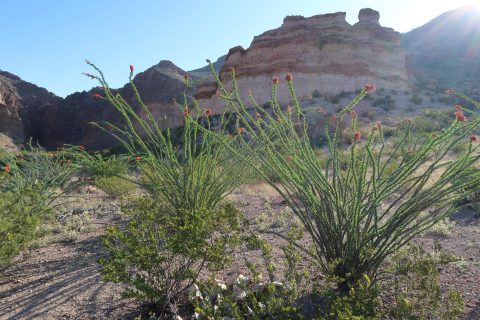
How to stay safe in the Gateway Towns
Notable gateway communities near Big Bend National Park are Marathon and Alpine to the north and Terlingua and Lajitas to the west.
Each of these communities offer dining, lodging, shopping, and activities for tourists.
When visiting Big Bend National Park or nearby towns, check local news and weather reports before traveling and throughout your stay.
Make sure to lock your vehicle at all times, and always check your surroundings to be aware of what’s going on around you.
Keep cash on hand to a minimum, and keep your valuables out of sight if you must travel with them.
If you plan to stay the night in a gateway town, check reviews for hotels or house-sharing locations listed on AirBnB or VRBO before choosing one.
In short, always be cautious travellers. There is always risk, but much of the routine safety advice is as applicable in the west Texas desert as it is in New York City!
General Travel Safety Tips
Some things to always consider when you travel are…
1. Carry a first aid kit and keep necessary medications (especially rescue inhalers, Epi-Pens, and other life saving medications) easily accessible.
2. Carry proper identification at all times, including medical and car insurance cards as well as vehicle registration.
3. Make sure that your vehicle is properly maintained and that your spare tire is in good condition.
4. Know where to find gas and vehicle service stations in the area. If your vehicle breaks down, stay with it and call for help.
5. Keep a spare phone charger and a fully charged power brick on hand if you have one.
6. Make sure that somebody knows where you are and what your route is.
7. Know and understand local laws, including driving regulations. Always obey the speed limit.
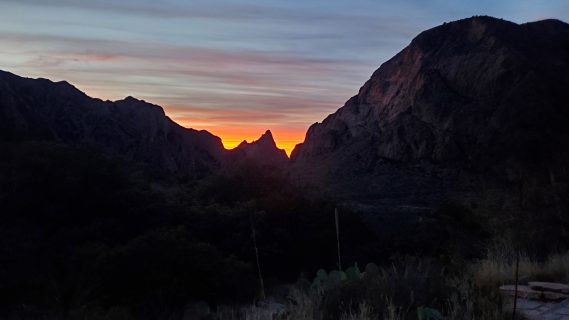
Now, go have fun in Big Bend!
Yes, we have just spent some time sharing the dangers of the region. Yes, there are some extra precautions to consider. But, I promise you, the vast desert and the clear skies will relax you and charm you, if you let them!
Big Bend a favorite spot for Texans. It’s where we feel tough and free and wild. It’s a place to be a cowboy, an explorer, or a scientist.
It’s a great place for families. Now you’re ready to go enjoy Big Bend National Park!
– Written by Cami Gill

